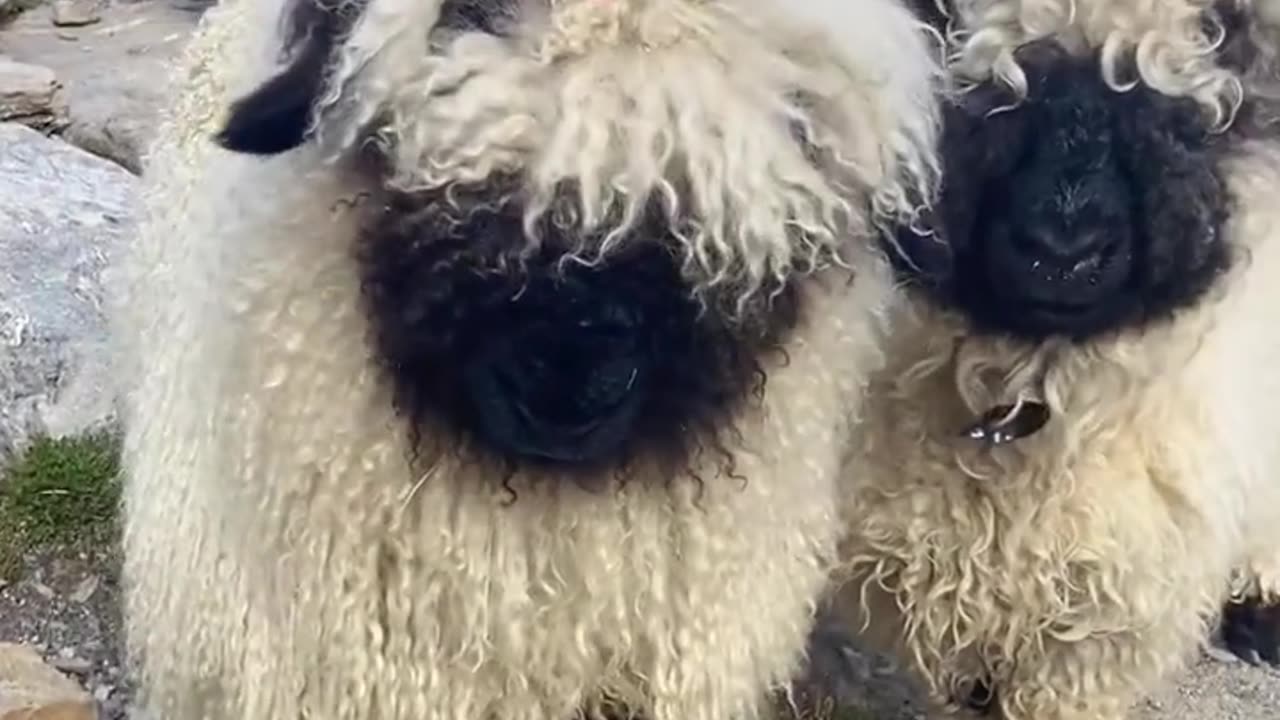Premium Only Content

Cute cute sheep🐑 animal 🥰❤️
Sheep and goats are two distinct species, but they share similarities in their domestication and roles in human history. Here's a brief overview of the life story of sheep and goats:
Sheep:
Sheep, scientifically known as Ovis aries, have been domesticated by humans for thousands of years. They are believed to be among the first animals domesticated, with a history dating back around 10,000 years. Here is an overview of their life story:
Domestication: Sheep were initially domesticated for their meat, wool, and milk. Different breeds of sheep have developed over the centuries, each with specific characteristics and purposes.
Habitat: Sheep can be found in a wide range of habitats, from mountainous regions to grasslands. They are adaptable to various environmental conditions.
Diet: Sheep are herbivores and primarily graze on grass and other vegetation. They have a complex digestive system that allows them to extract nutrients from fibrous plants.
Reproduction: Sheep give birth to lambs, and the reproduction cycle is annual. Ewes (female sheep) typically give birth to one or two lambs at a time.
Wool Production: One of the most valuable aspects of sheep is their wool. Different breeds produce different types of wool, which can be used for clothing, textiles, and other products.
Cultural and Economic Significance: Sheep have played a significant role in the economies and cultures of many countries. They have been used for their meat, wool, and even in religious rituals.
Goats:
Goats, scientifically known as Capra aegagrus hircus, also have a long history of domestication. Their story is similar in many ways to that of sheep, but there are some key differences:
Domestication: Goats were domesticated around the same time as sheep. They are kept for their meat, milk, and fiber (in the case of some breeds).
Habitat: Goats are highly adaptable and can be found in a wide range of habitats, from mountains to deserts. They are known for their ability to graze on a variety of plants, including those less palatable to other livestock.
Diet: Like sheep, goats are herbivores and primarily graze on vegetation. They have a reputation for being browsers and will eat leaves, shrubs, and even tree bark.
Reproduction: Goats give birth to kids, and the reproduction cycle is annual. Does (female goats) typically give birth to one or two kids at a time.
Milk Production: Goats are known for their milk production. Goat's milk is consumed and used for making various dairy products like cheese and yogurt.
Cultural and Economic Significance: Goats have cultural significance in various societies and are used for their meat, milk, and other products. They are particularly important in regions with arid and semi-arid climates.
Both sheep and goats have played vital roles in human agriculture and have contributed to the development of various societies. Their adaptability and versatility have made them valuable livestock for thousands of years.
-
 2:02:53
2:02:53
Badlands Media
13 hours agoBaseless Conspiracies Ep. 149: Epstein Docs, Charlotte Stabbing, and Trump’s Next Moves
46.5K16 -
 2:56:12
2:56:12
TimcastIRL
8 hours agoTrump SLAMS Democrats Over Irina Zarutska Killing, Says WAR Over Chicago Crime | Timcast IRL
193K120 -
 29:08
29:08
Afshin Rattansi's Going Underground
1 day agoCol. Lawrence Wilkerson: World War 3 is ALREADY HERE, Netanyahu is INTENT on Greater Israel
24.9K26 -
 7:24:49
7:24:49
SpartakusLIVE
10 hours agoNONSTOP Snipes, Rockets, and BICEPS = Monday MOTIVATION
77.5K1 -
 6:31:35
6:31:35
Rallied
11 hours ago $4.55 earnedSolo Challenges All Day
63K2 -
 1:27:53
1:27:53
Flyover Conservatives
13 hours agoIs AI Actually Alien Intelligence? Dr. Jason Dean Exposes the Dark Side | FOC Show
53.6K6 -
 1:47:36
1:47:36
Glenn Greenwald
10 hours agoJD Vance and Rand Paul Clash on Due Process: War on Terror Echoes; Has the U.S. Given Up on Confronting China? Ben Shapiro's Latest Falsehoods About Israel | SYSTEM UPDATE #510
118K94 -
 LIVE
LIVE
RaikenNight
8 hours ago $5.82 earnedExploring the Galaxy of No Mans Sky
1,024 watching -
 9:20:23
9:20:23
Spartan
9 hours agoRanked and Expedition 33 (NG+4 and all enemies Set to 10x health)
32.6K2 -
 2:54:31
2:54:31
Jokeuhl Gaming and Chat
13 hours agoDARKTIDE - Warhammer 40k w/ Nubes and AoA
24.9K1